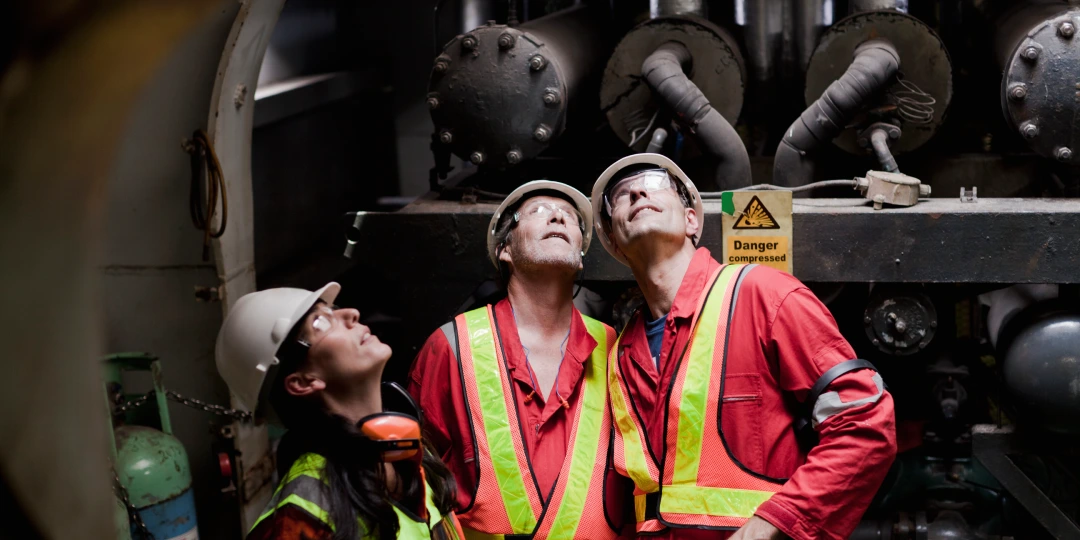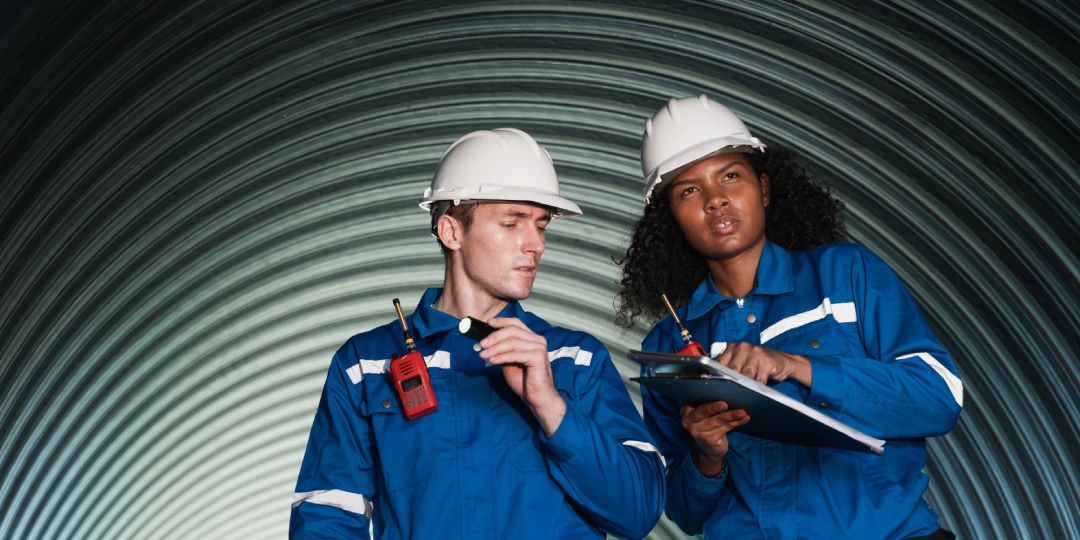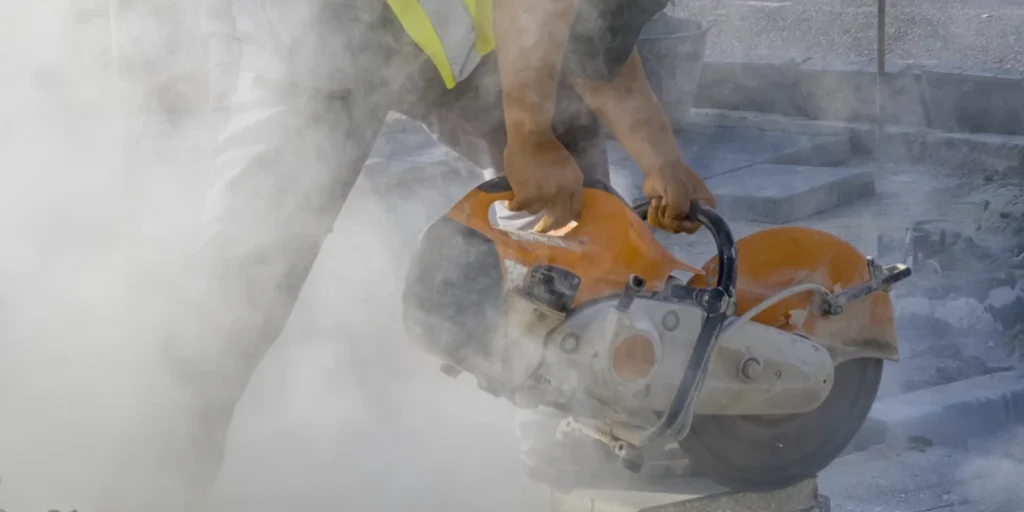Introduction: The Hidden Risks of Confined Spaces
A confined space can be deceptive. At first glance, it may resemble any ordinary workspace—a concrete vault under a city sidewalk, a silage tank at a food plant, or a utility access chamber beneath a construction site. Yet these spaces, though often compact and seemingly stable, contain risks that escalate the moment a worker steps inside. Oxygen levels can plummet. Toxic gases can go undetected. Movement can become restricted. The very features that define a confined space—limited entry, poor ventilation, and temporary occupancy—create an environment where danger compounds rapidly and silently.
In Nashville, industries are expanding fast. From new high-rises to municipal infrastructure upgrades, the demand for skilled labor in high-risk settings is growing. These environments often involve some form of confined space entry, whether for inspection, repair, or routine maintenance. The consequence of a lapse in safety in these scenarios is not minor—it’s catastrophic. That’s why awareness, planning, and action around confined space safety aren’t optional in Middle Tennessee—they’re essential.
Fortier Loss Control addresses this need with precision. Recognizing the inherent dangers in confined space operations, the company has made it a cornerstone of its risk management strategy. Its approach weaves prevention into daily operations. From the outset of a project, Fortier evaluates not just whether confined space entry is necessary, but how to manage every variable tied to that task. Their method is preventative, not reactive. By designing protocols around confined space safety before a worker enters the site, they reduce exposure, lower liability, and protect lives.
Understanding What Qualifies as a Confined Space
A confined space is not just any cramped or awkward area—it must meet specific, regulated criteria. According to OSHA, a space qualifies as confined when it has limited or restricted entry and exit, is not designed for continuous employee occupancy, and is large enough for a worker to enter and perform work. These definitions may seem straightforward, but real-world application requires nuance. Misidentifying a confined space can lead to inadequate controls, which in turn puts workers at risk. Fortier Loss Control trains its teams and clients to recognize these subtleties with confidence and accuracy.
This precision matters because confined spaces are everywhere—beneath roads, inside HVAC systems, behind industrial machinery. In Nashville alone, work in stormwater management, warehouse maintenance, and manufacturing regularly involves some form of confined space access. Each of these environments has its own complexity and potential hazards. What they share is an unforgiving nature. If atmospheric conditions shift, or if something goes wrong deep inside the space, a worker’s escape route is rarely simple. Fortier’s detailed site assessments help ensure that no space is entered without being thoroughly evaluated and categorized.
The classification of a space directly influences the safety measures that follow. A confined space that meets the criteria for a permit-required entry—due to hazards such as low oxygen or engulfment risk—triggers more robust precautions. These include continuous air monitoring, pre-entry briefings, standby rescue personnel, and retrieval systems. Fortier incorporates this knowledge into every project plan. Rather than taking a one-size-fits-all approach, the company ensures that each confined space is assessed for its unique risks and addressed with the proper level of control. That vigilance is what separates routine work from reckless exposure.
Common Hazards Found in Confined Environments
A confined space amplifies risk by design. The very conditions that define these areas—enclosure, restriction, and lack of airflow—turn minor hazards into life-threatening scenarios. One of the most critical threats is atmospheric contamination. Gases such as hydrogen sulfide, carbon monoxide, or even excess carbon dioxide can accumulate silently. Without proper testing, workers may enter a seemingly safe environment only to be overcome within minutes. The hazard isn’t always visible, which is why Fortier prioritizes atmospheric assessment as a first-line control.
Another insidious risk within a confined space is oxygen deficiency. A level below 19.5% oxygen can lead to dizziness, unconsciousness, and death. Confined areas that have been sealed or idle for long periods—like storage bins or vaults—can become oxygen-depleted without anyone noticing. Engulfment hazards are also common, particularly in silos, tanks, or grain bins. A worker can be submerged in loose material like sand, grain, or sludge in seconds. Fortier trains its teams to identify these risks before entry, not during, ensuring decisions are driven by data and not assumption.
Physical hazards compound the threat. Slick surfaces, unstable structures, exposed wiring, and tight clearance can all create danger inside a confined space. Even simple tasks—like turning or adjusting a valve—can become hazardous when room is limited and egress is blocked. Fortier embeds physical hazard checks into every stage of its confined space protocol, combining visual inspection with sensor-based analysis. The result is a comprehensive understanding of the space—not just what it is, but how it behaves under working conditions.

Why Confined Space Safety Is Critical in Nashville’s Industrial Sectors
Nashville’s growth isn’t just in housing or hospitality—it’s industrial. The city’s expanding footprint includes wastewater plants, utility infrastructure, manufacturing facilities, and logistics hubs. Many of these sectors involve routine work inside confined spaces. Whether it’s maintenance on underground utilities or entry into fuel storage tanks, confined space access has become an operational norm across the region. With that normalization comes the risk of complacency—treating dangerous spaces as routine without reinforcing safety at every turn.
The labor force in these sectors is often under pressure to perform quickly, meet deadlines, and manage multiple projects simultaneously. That pace makes the meticulous requirements of confined space entry easy to shortcut unless properly enforced. Fortier Loss Control counters this pressure by embedding its safety approach within operational planning—not as an add-on, but as a standard. For clients in Nashville, this means confined space safety isn’t a disruption—it’s an integrated part of doing business the right way.
Local conditions also present specific challenges. Nashville’s climate can affect air density and ventilation, while its older infrastructure includes legacy confined spaces that weren’t built with modern safety access in mind. Fortier tailors its confined space protocols to reflect these local realities. That includes adjusting monitoring methods, updating entry procedures, and offering site-specific training to crews. It’s this local adaptability that makes Fortier an invaluable partner to industries operating within the city’s fast-evolving industrial framework.
Fortier’s Approach: Safety Built from the Ground Up
At Fortier Loss Control, the approach to confined space safety is holistic, deliberate, and built from foundational principles. It starts with a recognition that these environments demand more than checklists—they require a systems-level understanding of risk. Before any project begins, Fortier conducts a comprehensive job hazard analysis that identifies all spaces potentially classified as confined and evaluates them for atmospheric, structural, and access-related risks. No assumptions. No shortcuts.
What sets Fortier apart is its emphasis on custom-built safety programs. While many firms rely on prewritten protocols, Fortier adapts each confined space plan to the specific site and work scope. This may involve altering air monitoring placements, incorporating vertical retrieval equipment, or developing dual-team entry procedures. Every recommendation is backed by field experience and a deep knowledge of federal and state safety codes. The result is a confined space entry plan that’s functional, enforceable, and designed for actual conditions—not theoretical ones.
Culture is also a key part of Fortier’s success. Employees and contractors are trained to treat confined space work with the gravity it deserves. Supervisors are empowered to stop work if conditions change, and teams are encouraged to voice concerns without fear of reprisal. This culture of transparency and accountability means that confined space risks are surfaced early and addressed quickly. It’s not just a plan on paper—it’s a mindset embedded into daily operations. Fortier doesn’t just manage risk—it rewrites how it’s approached.
Training and Certification: Building Competence and Confidence
Working in a confined space demands more than physical readiness—it requires mental clarity, technical knowledge, and situational awareness. Fortier Loss Control takes training seriously, knowing that even the best protocols will fail without competent personnel to carry them out. Their training programs go beyond compliance checklists. They’re designed to immerse workers in real-world scenarios that mirror the unpredictability and pressure of actual confined space operations.
Fortier’s certification process equips workers with skills they can trust. From understanding how to calibrate and interpret gas monitors to practicing simulated rescue drills, each course is structured to build both competence and confidence. The curriculum includes atmospheric hazard recognition, lockout/tagout procedures, communication protocols, and emergency response tactics. Importantly, it trains teams as units—not just individuals—so coordination under stress becomes second nature. This is essential in confined space work, where miscommunication can escalate into catastrophe in seconds.
Certification isn’t a one-and-done event at Fortier Loss Control. The company requires routine refreshers, hands-on recertifications, and just-in-time training when tasks or environments change. It also monitors evolving OSHA regulations and updates its programs accordingly. This ongoing commitment ensures that every person entering a confined space under Fortier’s guidance is current, capable, and well-prepared—not just for the expected, but for the unforeseen. That reliability saves time, preserves life, and reduces liability for every stakeholder involved.

Atmospheric Testing and Monitoring Protocols
No aspect of confined space safety is as time-sensitive—or as potentially lethal—as atmospheric conditions. A single breath in an oxygen-deficient or gas-saturated space can lead to unconsciousness or death. Fortier Loss Control’s atmospheric testing protocols are designed to prevent such outcomes by turning detection into a disciplined science. Pre-entry testing is mandatory, but it’s only the beginning. Continuous monitoring throughout the duration of the entry is what truly protects workers.
Fortier uses multi-gas monitors capable of detecting oxygen levels, lower explosive limits (LEL), and toxic gases such as hydrogen sulfide and carbon monoxide. Technicians are trained not only to operate these devices, but to interpret readings and take immediate corrective action. Alarm thresholds are clearly defined and reviewed before each entry. When a space qualifies as permit-required, no step proceeds without documented verification that conditions are within safe parameters. This makes atmospheric testing a frontline defense, not a formality.
The company also emphasizes equipment reliability. Monitors are routinely calibrated and subjected to bump tests. Workers know how to spot a sensor drift and are trained to escalate any anomalies. Fortier’s culture does not tolerate guesswork in confined space entries. If air quality changes, work stops. Period. That zero-tolerance policy gives workers assurance that their well-being is prioritized above all else, and it builds trust in the safety system itself—a trust that can be the difference between diligence and disaster.
Rescue Planning: Preparing for the Unthinkable
Even with meticulous preparation, emergencies in confined space work can and do happen. What separates a near-miss from a tragedy is the speed and precision of the rescue response. Fortier Loss Control treats rescue planning as a vital part of confined space safety—not an afterthought. Every entry plan includes a site-specific rescue strategy built on the assumption that retrieval may be necessary. This approach ensures that if something goes wrong, teams are not scrambling—they’re executing a practiced, well-equipped response.
Fortier’s rescue plans are detailed and deliberate. They consider vertical versus horizontal entry, physical obstacles, potential entrapment scenarios, and the medical needs of unconscious or injured workers. Equipment such as tripods, self-retracting lifelines, harnesses, and breathing apparatuses are pre-staged and inspected before each job begins. Designated rescue personnel are present and certified in both confined space retrieval and basic life support. Their presence isn’t symbolic—it’s operational and mandatory.
Training is integrated into the rescue plan. Fortier runs mock rescues under real site conditions to ensure all team members understand their roles and can perform them under pressure. These drills expose gaps before they become liabilities and help sharpen response times. In a confined space, where minutes can mean the difference between life and death, preparation is everything. Fortier understands this, and that understanding is built into every project they touch—because in their world, assuming nothing is how you protect everything.
Compliance with OSHA and Tennessee State Standards
Navigating the regulatory landscape of confined space entry is complex. Federal standards, especially OSHA 1910.146, outline clear expectations, but interpreting and applying those requirements correctly can be daunting—particularly when state-specific rules in Tennessee add further layers of responsibility. Fortier Loss Control bridges this gap with compliance frameworks that are both legally sound and operationally efficient.
Fortier begins by conducting a compliance audit for every new project involving confined spaces. This includes verifying permit requirements, lockout/tagout controls, ventilation needs, signage, and communication systems. Documentation is meticulously prepared, not just to satisfy inspections, but to serve as a living roadmap for the job. Each element is aligned with OSHA’s language, with cross-references to Tennessee’s Department of Labor regulations where relevant. This gives clients peace of mind—they’re not just checking boxes, they’re building a verifiable culture of compliance.
Staying ahead of regulation is also part of the equation. Fortier Loss Control monitors changes in both federal and state codes and proactively updates client protocols to match. This prevents last-minute scrambles when auditors arrive or when projects shift into higher-risk phases. By translating dense legal requirements into clear, workable procedures, Fortier protects its clients from citations, fines, and operational shutdowns. More importantly, it reinforces the reality that confined space safety is not just ethical—it’s enforceable.

Frequently Asked Questions
1. What qualifies a space as a “confined space,” and why does it matter?
A confined space is defined by OSHA as any area with limited entry or exit, not designed for continuous occupancy, and large enough for a worker to enter and perform work. Examples include tanks, silos, manholes, and crawl spaces. Proper classification matters because it determines the level of safety planning, monitoring, and rescue readiness required. Misidentifying a confined space can lead to serious health risks or even fatalities.
2. How does Fortier Loss Control ensure safety during confined space operations?
Fortier uses a comprehensive, layered approach that includes site-specific hazard assessments, continuous atmospheric monitoring, trained standby rescue teams, and customized client protocols. Every confined space operation is supported by clear documentation, real-time supervision, and equipment suited to the specific risks of the environment. Fortier also trains workers and supervisors through hands-on simulations to ensure they can respond quickly and effectively in any scenario.
3. What role does client collaboration play in Fortier’s confined space safety programs?
Client collaboration is central to Fortier’s strategy. Rather than applying generic safety plans, Fortier works directly with clients to understand their job site conditions, workforce needs, and compliance challenges. This results in tailored confined space programs that integrate smoothly into daily operations. Ongoing support, training, and compliance updates ensure that each partner remains equipped to manage confined space risks long after initial implementation.

Final Thoughts: Elevating Safety as a Daily Standard
Confined space work is inherently unforgiving. The risks are complex, often hidden, and escalate quickly when not addressed with deliberate care. In Nashville’s fast-paced industrial sectors—where infrastructure, logistics, and utilities intersect—there is no margin for error. That’s why Fortier Loss Control treats confined space safety as more than a checklist. It’s a core operational principle, embedded into every service the company delivers and every partnership it builds.
What sets Fortier apart is not just its technical knowledge or regulatory fluency—it’s its discipline. From detailed site assessments to real-time atmospheric monitoring, from custom rescue planning to rigorous crew training, every element of their confined space program is built with intention. It’s a system designed not just to meet compliance standards, but to protect people—before, during, and after every entry. That commitment doesn’t waver, even when schedules tighten or project scopes shift.
Ultimately, Fortier’s strength lies in how it transforms high-risk spaces into managed environments through consistency, foresight, and trust. By aligning cutting-edge safety practices with the specific needs of Nashville’s industries, Fortier doesn’t just “get it right”—it raises the standard for what right looks like. In confined space operations, that difference isn’t theoretical. It’s measurable. It’s visible. And, most importantly, it saves lives.



